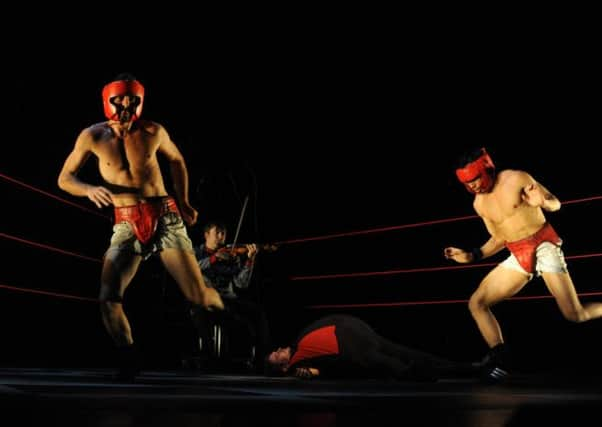Theatre preview - Compagnie Käfig’s Boxe Boxe, Edin


Less prevalent, however, is a boxing coach who shows you how to swing a good right hook or uppercut – but that’s exactly who the dancers of Compagnie Käfig spent three weeks with during the creation of Boxe Boxe.
Formed in 1996, Käfig has toured its blend of hip hop and contemporary dance to over a million people in 61 countries – a success largely born out of the integrity of choreographer Mourad Merzouki, for whom theatrical artistry is just as important as the excitement of headspins and backflips.
Advertisement
Hide AdWhich means, when it comes to recruiting dancers into the Paris-based company, he has very specific criteria. “They need to be versatile,” says Merzouki, “and to give me their energy and dance vocabulary. But I also need them to be open-minded, and accept that I will lead them into something new.”
In the case of Boxe Boxe, the something new was boxing – a sport Merzouki trained in before turning to dance full-time. Finding a number of similarities between the two disciplines, he decided to explore that on stage.
“Each aspect of boxing has its equivalent in choreography,” explains Merzouki. “The ring and the stage, the gong and curtain-up, the referee and critics. There are so many similarities, and because I used to box when I was young, I really noticed that the two had a lot in common.”
Merzouki also cites the psychological preparation both dancers and boxers go through before a “performance”, the personal injury many of them sustain – largely for the pleasure of others – and the squaring up that takes place between two boxers in the ring and two dancers during a breakdance battle, as part of that common ground.
In order to “emphasise the movements of boxing through dance”, as was his aim, Merzouki brought punch bags, boxing gloves and ring ropes on to the stage. But to make that work, the performers had to look authentic – hence the boxing coach.
A dancer with Käfig for four years, Aurélien Desobry found training with the coach a key part of the rehearsal process.
Advertisement
Hide Ad“The most important thing was to look credible,” he says, “because we are all dancers, not professional boxers – but we have to look like we’re real boxers. So we worked a lot on our posture, and how to have the right attitude and the right movement for our feet.
“It was different to what we normally do – but in some ways it was very similar, because we’re used to working with our whole body and being in control of it. But boxing is about sport and performance – not about being artistic.”
Advertisement
Hide AdAlthough, as Desobry points out, breakdancing can sometimes straddle a fine line between athleticism and creativity: “Sometimes it’s seen as a sport sometimes a dance – it’s a bit ambiguous.”
For Merzouki, finding ways to add artistry to that athleticism has been his mission from the start. As a consequence, Boxe Boxe is tightly choreographed and staged – leaving just the encore for the Käfig performers to strike out on their own.
So, after a punishing and highly physical show, Boxe Boxe somehow ends with a lively display of street-style breakdance from the eight dancers.
“It’s a free gift,” laughs Desobry. “When you dance for over an hour in this kind of show, it’s nice to do what you want at the end and really express yourself.
“There is a lot of choreography in Boxe Boxe, and even though part of you is in there, it’s not totally you – whereas with the encore you can show what you would like to – if you have enough stamina.”
Käfig has long been known for doing things a bit differently, and Boxe Boxe in particular has one highly unusual aspect – the music. Unlike the majority of hip hop shows, where heavy bass drives the work along – this one features live music by the Debussy String Quartet.
Advertisement
Hide AdJoining the dancers on stage throughout, the four musicians form an integral part of the action, as they deliver works by Schubert, Verdi and Ravel.
“It’s been a really, really good experience for all of us,” says Desobry. “To have the musicians by your side feels totally different to using a CD. It gives you things that you just don’t get with a recorded soundtrack – it’s more sensitive, there’s a power and poetry to it, because you can see and feel the music being played.
Advertisement
Hide Ad“And even though I’m a hip hop dancer, I like to dance to classical music – it’s more fluent and lyrical, and less sharp. You’re still dancing in a hip hop style, but it’s totally different with classical music.”
• Compagnie Käfig’s Boxe Boxe is at Edinburgh Festival Theatre, 1-2 April